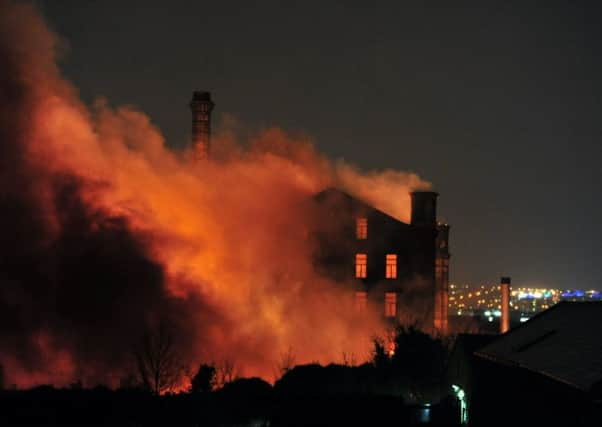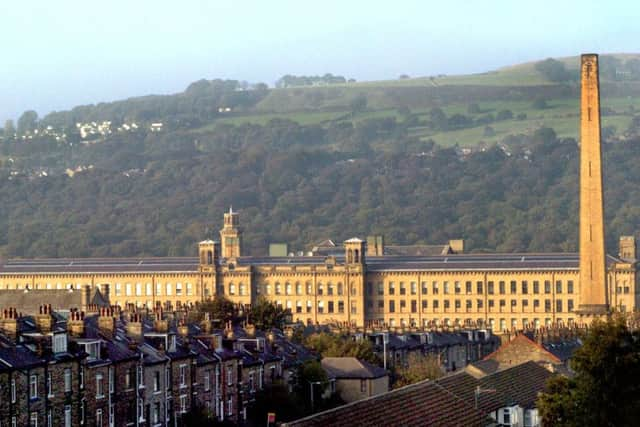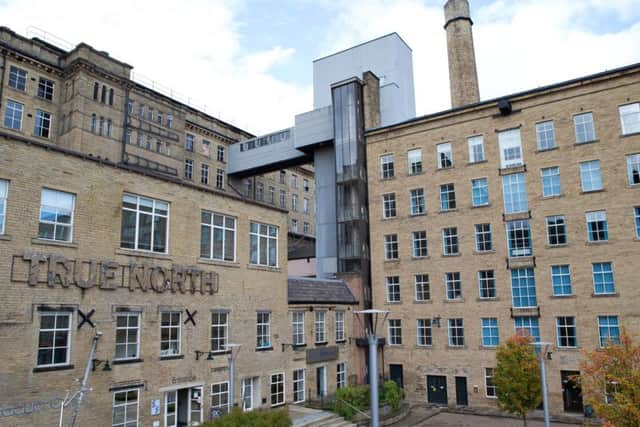Forging a bright future for Yorkshire's troubled mills


The review by Historic England will collate details of the many successful mill conversions that have already taken place to create a best practice guide for future developments.
It comes as work continues to demolish the Drummonds Mill at Manningham, which was destroyed by a huge fire last Thursday, and amid calls for a task force to be established to provide a strategic direction for the county’s troubled mills.
Advertisement
Hide AdAdvertisement
Hide AdHistoric England had been working with the owners of Drummonds Mill on their redevelopment plans for the last six months and have described the fire at the 155-year-old former textile mill as “a crying shame.”


“It was dreadful to see such a beautiful building on fire and to know that we have lost another historic Yorkshire mill,” said Trevor Mitchell, the planning director for Yorkshire at Historic England.
“Our new study will give us a handle on how we can help the other mills which have not yet been regenerated and what needs to be done to turn them around.
“Yorkshire’s textile mills are the original Northern Powerhouse and we regard them as a very important asset. They are absolutely and distinctly Yorkshire and we need to make more of them.
Advertisement
Hide AdAdvertisement
Hide Ad“If you want a Yorkshire home that’s of the 21st century then a 19th century mill conversion can provide just that.”


Only four years ago Bradford Council rubber-stamped plans for a redevelopment of Drummonds Mill that would have created over 100 apartments in the mill, which is now likely to be cleared to make room for new-build housing.
Historian Nigel Grizzard is urging the Government and local authorities to make it easier for mill owners to find new uses for some of the region’s most distinctive buildings.
“What happened with Drummonds Mill was a tragedy: there were loads of opportunities with the building but sadly the economics seem to have got in the way,” said Mr Grizzard. “One hundred and fifty years of history went up in smoke overnight.
Advertisement
Hide AdAdvertisement
Hide Ad“Once these great buildings are gone, that’s it. There is a lot of good work taking place but it’s not enough. What we need is a strategy for West Yorkshire, where there are still hundreds, if not thousands of historic mills that need our attention.


“We have to get all the various agencies and developers together and get them working in the same direction. A strategy group could also provide advice and guidance on funding, which is always an issue.”
Dozens of Yorkshire mills and mill buildings, many of which had listed status, have been razed to the ground in recent decades and hundreds more face an uncertain future.
There have been many notable redevelopment successes with Yorkshire mills, including Salts Mill at Saltaire, Dean Clough in Halifax, and Listers Mill and Goitside in Bradford.
Advertisement
Hide AdAdvertisement
Hide AdMr Grizzard added: “You can turn a mill building into almost anything you want and quite often the fact that a building is listed isn’t a problem because most people simply want to fiddle with the insides, rather than change it structurally on the outside.


“I’ve been involved in mill regeneration for 20 years and each time I think I’ve seen it all, something new comes along to surprise me. There are some wonderful conversions taking place,”
In recent years, developers have focused on high-end luxury apartments in disused mill buildings but with the Government increasingly offering incentives to help meet Chancellor George Osborne’s target of creating 400,000 new homes in the next five years, attention has now turned to more modest, and affordable apartments.
Mr Mitchell said: “There are plenty of examples of fantastic mill conversions into flats and apartments in places like Milnsbridge, Shipley, Leeds and Mirfield, which aren’t always high-value areas.
Advertisement
Hide AdAdvertisement
Hide Ad“Our hope is that the new study of the successful ones will help us see where any public funds can be better directed to secure the future of other mills.”
Five of the best mill conversions:
Salts Mill, Saltaire
Built in 1853 by the philanthropic textiles baron, Sir Titus Salt, the mill closed for business in 1986 and conversion work began two years later to create shops, cafes, restaurants and an art gallery housing one of the world’s biggest collections of the works of David Hockney.
Belle Vue Mill, Skipton
This Victorian mill overlooking the Leeds-Liverpool canal close to Skipton town centre demonstrates the value of sympathetic restoration and the benefits that can be gained from bold ambition. The 80,000 square feet of space within Belle Vue Mill now provides accommodation for Craven District Council and North Yorkshire County Council.
Red Brick Mill, Batley
There is nothing shoddy about this clever Victorian mill conversion which has established a reputation for the quality of its retailing, which focuses on home interiors. Lots of independent stores, plus some world famous designers, make the former industrial centre.
Lister’s Mill, Bradford
Advertisement
Hide AdAdvertisement
Hide AdOnce the world’s largest silk factory, Lister’s Mill in Manningham was built in 1871 to replace a mill destroyed by fire. Redevelopment of the derelict building as an apartments complex began in 2004, with the first residents moving in just two years later.
Dean Clough, Halifax
At one time Dean Clough was the home of the world’s largest carpet factory, which closed in 1983. It is now home to 150 businesses and arts venues including Crossley Gallery and the Viaduct Theatre.